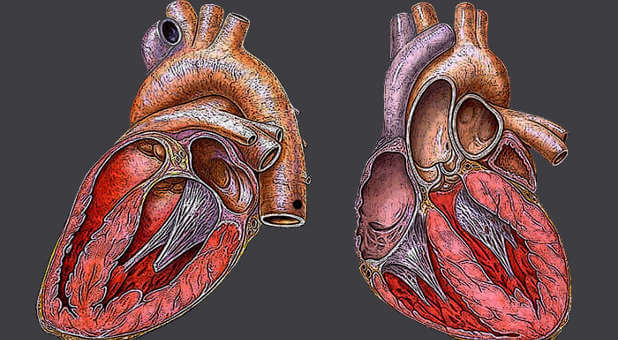People don’t usually think of the heart and the liver as being closely connected, but what happens to your liver absolutely impacts the health of your heart.
The liver is your body’s largest internal organ, and it is vitally important for processing nutrients and also removing toxins from the food we digest. If it’s not working properly, toxins can build up and cause damage.
One of the chief causes of poor liver function is fatty liver disease, a condition that causes the liver to swell with fat.
Because the liver naturally contains some stores of fat, a certain amount of fat content is expected. But if that fat accounts for more than 10 percent of the organ’s total weight, it is considered fatty liver disease.
Fatty liver disease comes in two types: alcoholic fatty liver disease and nonalcoholic fatty liver disease. Alcoholic fatty liver disease happens in people who abuse alcohol—a risk that we have known about for a long time.
But the type of fatty liver disease that is becoming epidemic in the United States is called nonalcoholic fatty liver disease, or NAFLD.
I often write about the dangers of abdominal fat and how having too much fat around your belly creates inflammation, which helps to kick off the process of atherosclerosis (hardening of the arteries) and leads to heart disease.
The same thing happens when your liver is too fatty. Whether that inflammation comes from a fatty liver or fat in your belly, the result is the same. Your risk of heart disease goes up.
In April, a long-term study found that NAFLD was a strong independent risk factor for the early development of coronary artery disease, even in the absence of other traditional, recognizable risk factors such as smoking, high blood pressure, and high cholesterol and triglycerides.
In addition to heart disease, NAFLD also leads to diabetes. In fact, studies show that about 70 percent of people with diabetes also have fatty liver disease.
Although there are drugs in the pipeline, there is currently no medication to combat nonalcoholic fatty liver disease. However, you can actually manage the condition—and even reverse it—in the same way you do heart disease.
Lose Weight. A 2009 study of 50 patients found that those who lost 5 percent of their weight improved their blood glucose levels and reduced the fat in their livers. Those who lost 9 percent of their body weight actually began to see liver damage reverse.
Eat Better. Whether you’re losing weight or not, it’s important to improve your diet. Replace processed and fried foods with whole foods such as fruits and vegetables, whole grains, and fish or meat that is not fried. Some studies show that the Mediterranean diet, with its reliance on fruits, vegetables, whole grains and olive oil may also protect the liver.
You should also eliminate refined sugars from your diet.
Exercise. In 2011, a study of obese people with nonalcoholic fatty liver disease found that walking one hour a day on a treadmill for seven consecutive days jump-started metabolism and helped reduce inflammatory damage.
Chauncey W. Crandall, M.D., F.A.C.C., chief of the cardiac transplant program at the world-renowned Palm Beach Cardiovascular Clinic in Palm Beach Gardens, Florida, practices interventional, vascular and transplant cardiology. Dr. Crandall received his postgraduate training at Yale University School of Medicine, where he also completed three years of research in the cardiovascular surgery division. Known as the “Christian physician,” Dr. Crandall has been heralded for his values and message of hope to all his heart patients.
For the original article, visit chaunceycrandall.com.















































